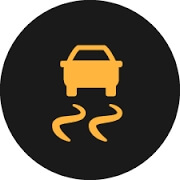Winter weather driving safety tips
Follow these winter weather driving safety tips to arrive safe and sound
Winter weather can transform our roads into treacherous pathways fraught with hidden dangers. Snow, ice, and freezing temperatures demand a heightened level of awareness and preparation from drivers. Adhering to winter weather driving safety tips ensures safe travel during the colder months. Here are comprehensive strategies to help you navigate winter roads safely.
Prepare Your Vehicle For Winter Conditions
• Winter Tires— One of the most crucial winter weather driving safety tips is to equip your vehicle with winter tires. These tires are specifically designed to provide better traction in snow and ice, reducing the risk of skidding.
• Get Your Battery Tested Before Cold Weather Hits— Auto parts stores test car batteries for free and their testing equipment is very accurate. Stop by any auto parts store before the cold weather hits and ask for a battery test. If your battery fails the test, replace it right away.
• Fluids Check— Ensure your vehicle’s fluids, including antifreeze, oil, and windshield washer fluid, are topped up and suited for cold temperatures.
• Windshield Wipers— Replace old wipers with ones designed to handle snow and ice, ensuring clear visibility.
• Emergency Kit— Equip your car with an emergency kit that includes blankets, food, water, a flashlight, a first-aid kit, and any necessary medications.
Winter Weather Driving Safety Tip #1: Switch over to your winter driving techniques at the first snowfall
We’re all amazed at the number of accidents after the first snowfall, but we shouldn’t be. It happens every year, but drivers still think it’s fall and brake too late and round curves too fast. If the pandemic taught us anything, it’s that it’s going to take forever to get your car fixed after an accident. Think about that when the snow hits your windshield.
Driving Tip #2: Know when to turn off your traction control
Traction control is great for regular winter weather driving because it detects wheel slip and applies corrective measures  like braking and RPM reduction to prevent accidents. That’s great if you’re clipping along the road and hit an icy spot. But traction control can work against you when you’re trying to accelerate from a stop or when you’re stuck. It detects your spinning wheels and cuts engine power, leaving you stuck!
like braking and RPM reduction to prevent accidents. That’s great if you’re clipping along the road and hit an icy spot. But traction control can work against you when you’re trying to accelerate from a stop or when you’re stuck. It detects your spinning wheels and cuts engine power, leaving you stuck!
If you can’t accelerate from a stop or are stuck in snow, turn off the traction control.
How to turn off traction control
Most vehicles must be in PARK before you can turn off traction control. So, put the vehicle in park and press and hold the traction control button for a few seconds. Traction control will automatically turn on the next time you start the vehicle.
Winter Weather Driving Safety Tip #3: Overdrive is not your friend when you’re on slippery roads
Overdrive is great for getting the best gas mileage but can get you into  trouble in winter weather. When you’re in overdrive, you lose the advantages of engine braking, the slowdown that occurs when you take your foot off the gas.
trouble in winter weather. When you’re in overdrive, you lose the advantages of engine braking, the slowdown that occurs when you take your foot off the gas.
On slippery roads, shift out of overdrive and into manual or sport mode to regain engine braking to help you slow down when you back off the gas. Engine braking is especially important if you want to slow down as you head into a curve. You’ll find you have much more control over your vehicle in winter weather icy road conditions if you turn off the overdrive feature.
Safety Tip #4: Kill the cruise control
Cruise control, high speeds, and icy roads don’t mix. Even if the highway pavement appears dry, bridges and low spots can be slick. If you hit one of those spots when your cruise control is calling for more power, the sudden acceleration can cause you to lose control and land in a ditch. So, turn off the cruise control and back off the gas pedal as you approach bridges.
Winter Driving Safety Tip #5: 4WD and AWD Vehicles Land in the Ditch More Often than 2WD Vehicles Because Their Drivers Are Over-Confident
Yes, AWD and 4WD vehicles provide more traction when accelerating from a dead stop, and they provide a bit more stability on slippery roads. But 4WD and AWD give drivers a false sense of security in winter.
You can’t drive any faster on icy roads simply because your vehicle has AWD or 4WD. AWD and 4WD systems don’t stop you any faster or handle turns any better than a 2WD vehicle. When it comes to the laws of Physics, inertia and centrifugal force affect all vehicles equally. Next time you’re on icy roads pay attention to which vehicles are in the ditch…..yup, they’ll be ones with 4WD and AWD.
Tip #6: It’s all about tire tread depth
Tirerack.com conducted tests comparing the stopping and turning distances of winter tires and all-season tires. Here’s what they found.
• Winter tires stop your vehicle 66% faster on snow (an amazing 30-ft shorter) than all-season tires and 44% faster on ice.
Tirerack.com also conducted stopping distance tests at different tread depths of all-season tires. New tires have about 10/32” of tread. But once that tire wears down 4/32”, you need an additional 125 feet to stop on wet pavement. By the time your tires wear down to the legal limit of 2/32”, your stopping distance increases by up to 250 additional feet on wet pavement (compared to a new tire).
Based on those results, you can see why it’s so important to drive on good tires. Yes, new tires are expensive. But a single slide into a curb, even at slow speeds, can cause upwards of $1,200 damage to your front end (see this post). Your insurance deductible for a single accident will be more than a new set of tires!
Winter Driving Safety Tip #7: Learn the right way to get unstuck in winter
Everyone knows you want to rock your car or truck to get unstuck. But most drivers do it the wrong way by shifting back and forth between drive and reverse and gunning the gas. Yes, that’ll get you unstuck, but it can also destroy your automatic transmission. Here’s how that happens. You shift into drive and give it gas. The transmission performs the 1-2 and 2-3 shifts by applying and releasing pressure to different clutch packs and bands. Then you slam it into reverse and apply and release different bands and clutches. By repeating that maneuver over and over, you overheat the clutch discs and bands.
You can rock the car and get unstuck without shifting between drive and reverse. Here’s how. Shift the transmission into low gear (1) and leave it there. Feather the gas pedal until the gas moves forward a bit, then release the gas until the car begins to roll back into the rut. Then, feather the pedal again to create the rock. Repeat this procedure until you gain enough momentum to free yourself. Don’t overdo the gas—spinning your wheels just melts the ice/snow and makes it even harder to break free.
©, 2016 Rick Muscoplat
Posted on by Rick Muscoplat
